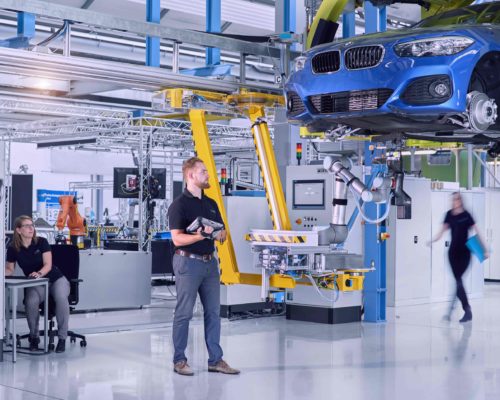
Problem
Assembly operations in automotive final assembly are often performed manually and overhead. These assembly operations are ergonomically very stressful for the employee. At this point, human-robot cooperation (HRC) as a key technology can increase the productivity of the assembly line and reduce costs.
Objectives
The cooperation of humans and robots can ensure a relief of the workers in ergonomically disadvantageous processes. The reduction of production costs, with increased process capability at the same time, offer further advantages of robot support.
Approach
Automated assistance systems are used to support underbody assembly. Using sensors to detect the joining points, tools can be used for automated bolting. Humans and robots thus work in close cooperation.
Areas of application
This technology is currently used in the automotive industry, but in principle it can be transferred to other ergonomically demanding activities.

